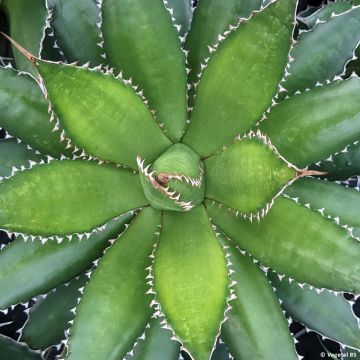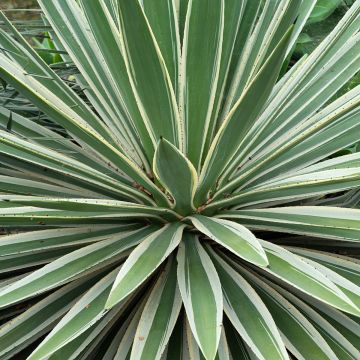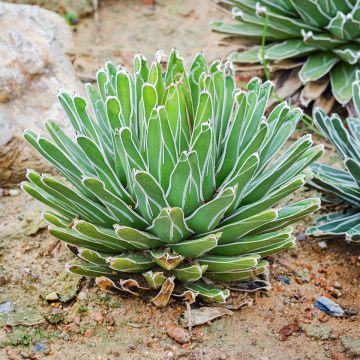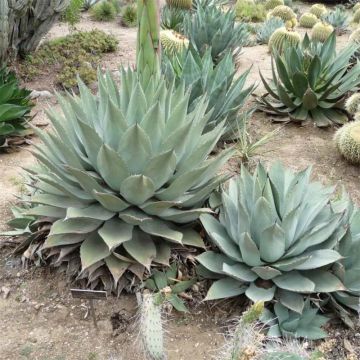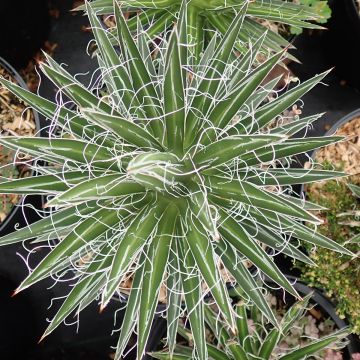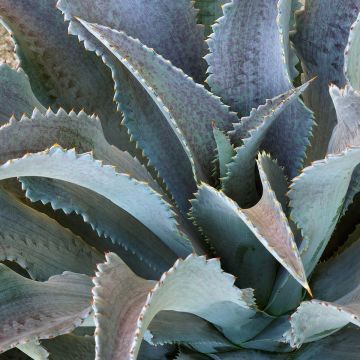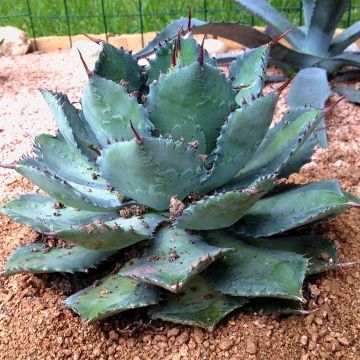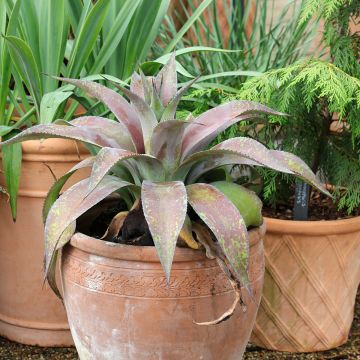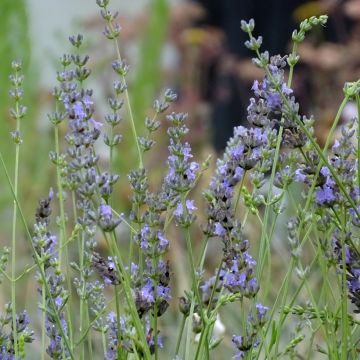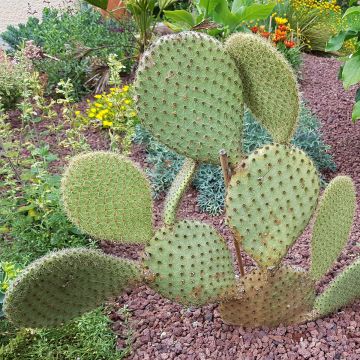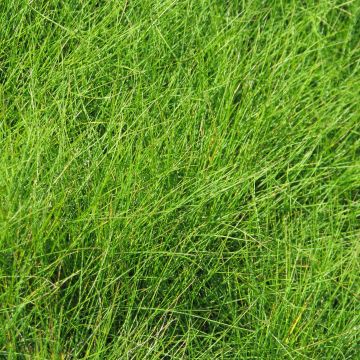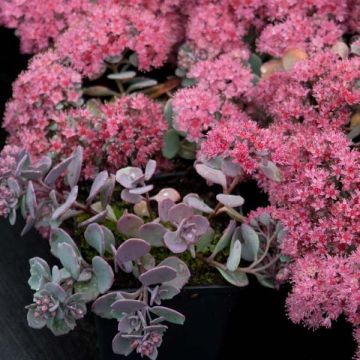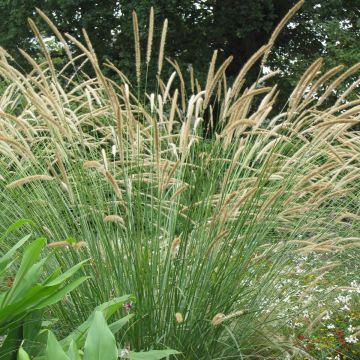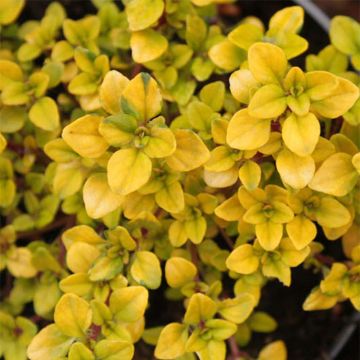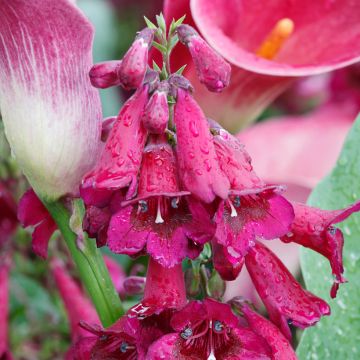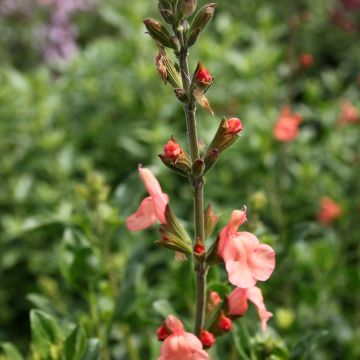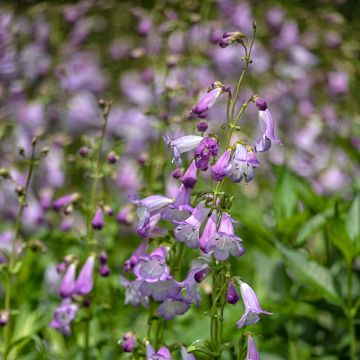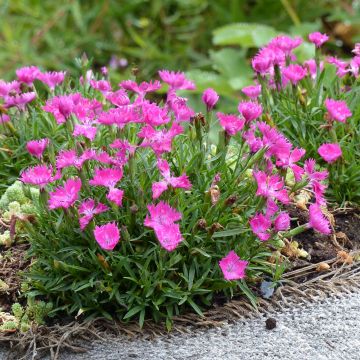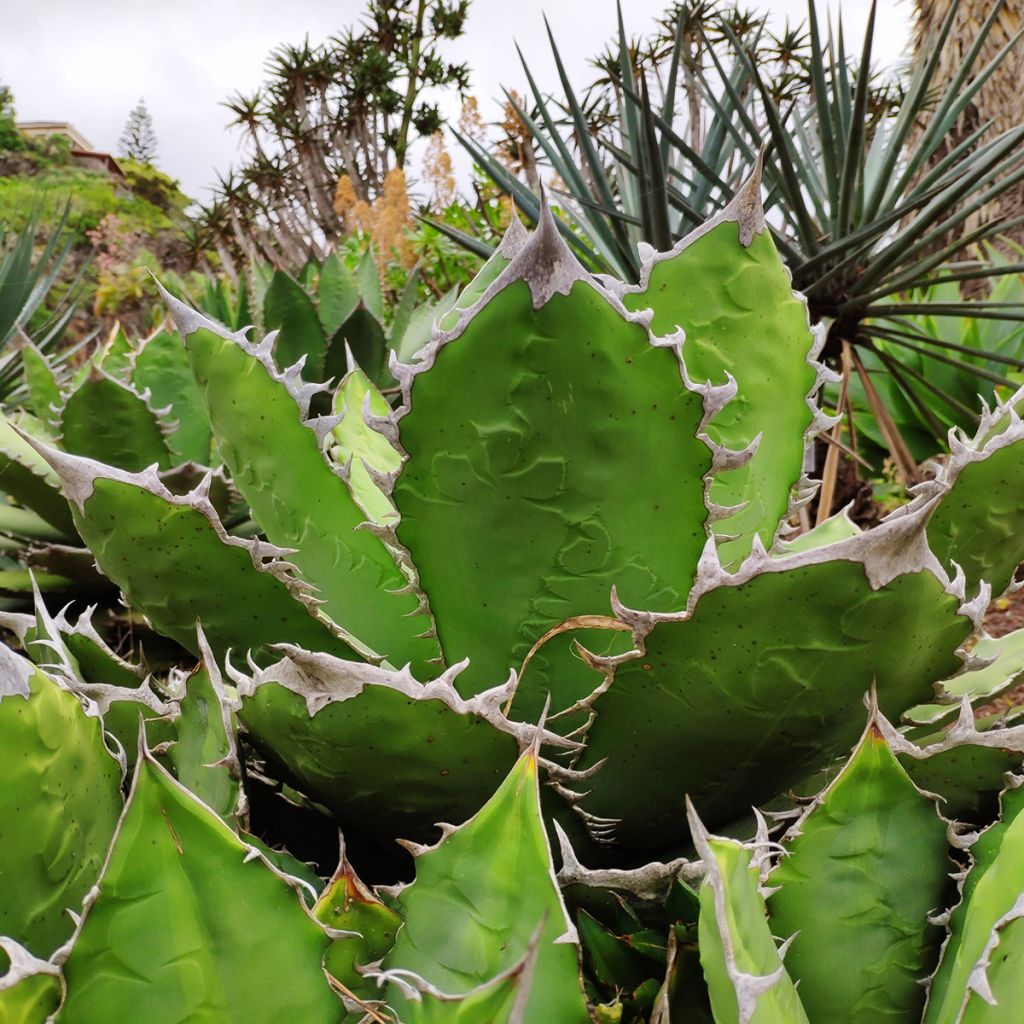

Agave titanota
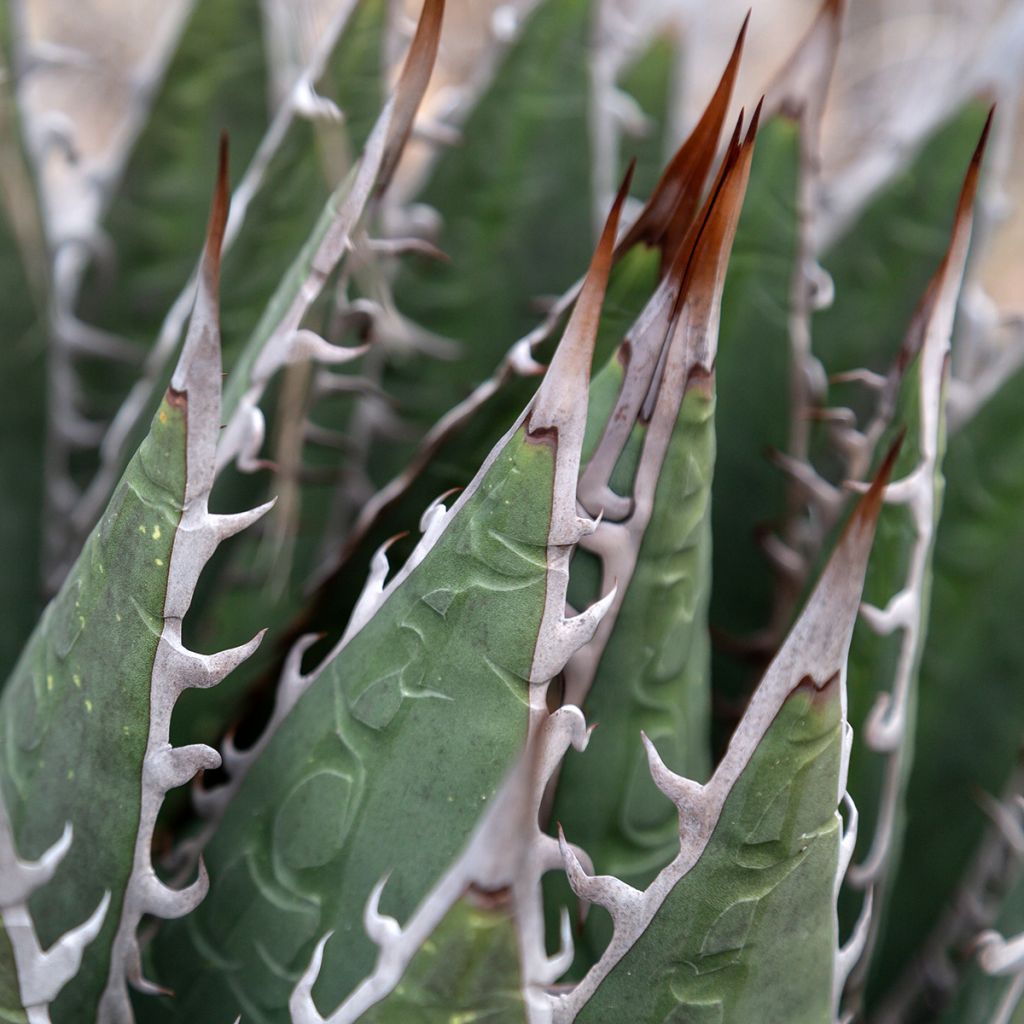

Agave titanota
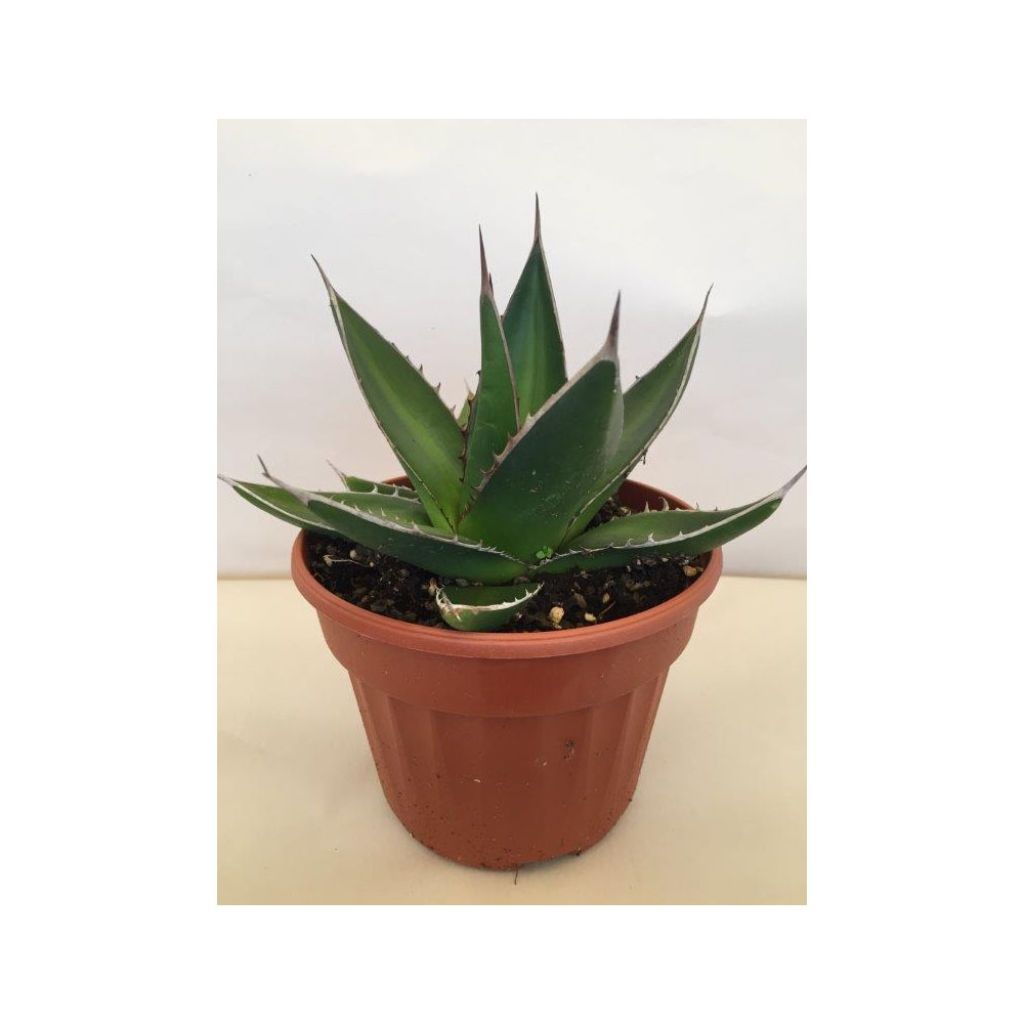

Agave titanota
Agave titanota
Agave titanota
Chalk agave
This item cannot be shipped to the selected country
Delivery charge from €5.90
More information
Schedule delivery date,
and select date in basket
This plant carries a 12 months recovery warranty
More information
We guarantee the quality of our plants for a full growing cycle, and will replace at our expense any plant that fails to recover under normal climatic and planting conditions.
From €5.90 for pickup delivery and €6.90 for home delivery
Express home delivery from €8.90.
Does this plant fit my garden?
Set up your Plantfit profile →
Description
Agave titanota is remarkable for the diversity of forms in which it presents itself: no two plants are alike! It is a medium-sized perennial succulent plant with a particularly open, compact, solitary rosette, composed of impressive, flat, lanceolate leaves whose colour varies from light green to glaucous and then to grey. Its coloured margin with hooked lateral spines is quite pronounced, turning hazelnut and then parchment-coloured as it dries and ripens. Indeed, the margin can be entire or deeply notched, and its teeth can be more or less numerous, large, hooked and twisted. This hardy perennial can tolerate drought and high temperatures very well. Use it to plant a dry slope in full sun in mild climate regions. In colder regions, plant in a pot protected from cold and humidity.
Originally from Oaxaca in central Mexico, Agave titanota is above all a perennial succulent plant perfectly adapted to high temperatures that is used to growing on steep slopes and rocky ledges. It belongs to the Asparagaceae family (formerly Agavaceae), just like Yuccas or tuberose. This herbaceous succulent plant has rhizomes capable of producing few suckers, but it is almost devoid of an above-ground stem, which takes the form of an extremely short single trunk. The small rosette is very open when the plant is in full sun, but will be more compact in a partially shaded area. It will not exceed 70cm (27in) in all directions, with fairly slow growth. It is composed of massive, flat, lanceolate, succulent leaves, 60cm (24in) long and 12cm (5in) wide, with margins and lateral spines of various shapes, sizes and densities. They are initially hazelnut in colour before drying and becoming parchment-like. The terminal spine of the leaves is very large, measuring 3 to 4cm (1 to 2in) in length. When a rosette reaches the venerable age of 15 to 20 years, or even older, it produces a flowering stem reaching 3 to 6m (10 to 20ft) in height. It bears many horizontal branches. The branches bear flattened and spherical panicles composed of a myriad of small yellow tubular flowers. The rosette, known as semelparous, dies after flowering, which lasts several months, having taken care to produce many small peripheral rosettes to ensure its perpetuation.
In mild climates, it will find its place in a large rockery, a slope, or in a raised bed whose soil has been enriched with gravel or coarse sand. It can be planted with frost-resistant prickly pears such as Opuntia humifusa 'Millevaches', giant fennel, fairly hardy candle cacti (Cleistocactus strausii, Cylindropuntia imbricata), and ground-covering plants such as dwarf mugworts, which are all equally undemanding plants. Gardeners in colder regions can grow it in full sun in a very large pot on a terrace, carefully choosing the most sheltered spot, to recreate a setting inspired by gardens from the edge of the world.
Report an error about the product description
Agave titanota in pictures
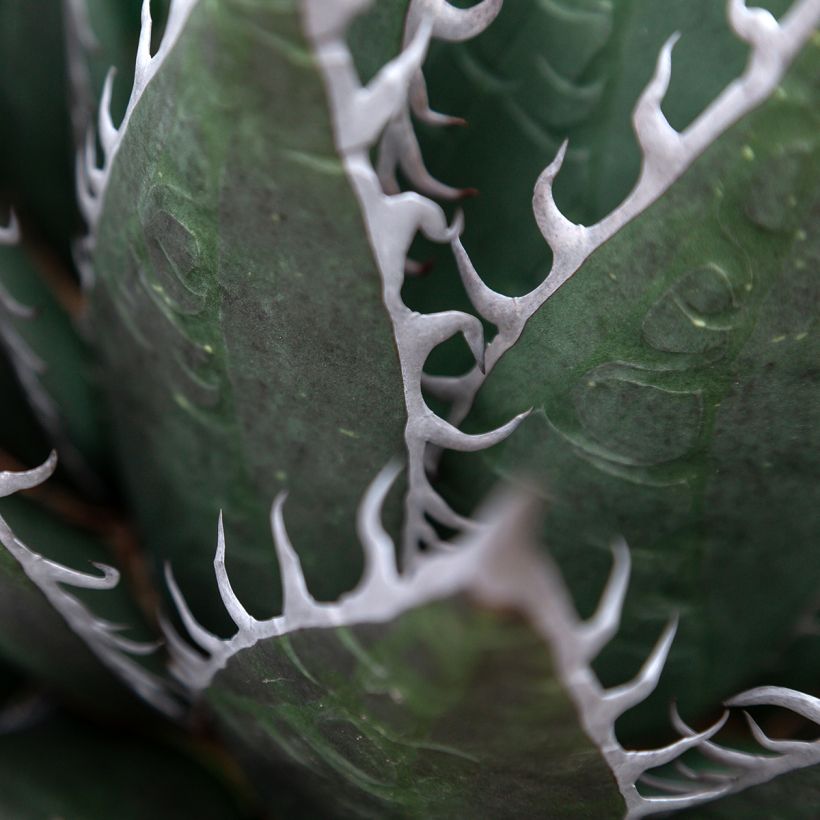

Flowering
Foliage
Plant habit
Botanical data
Agave
titanota
Agavaceae
Chalk agave
North America
Other Agave
Planting and care
Position it in full sun or partial shade. Plant it in well-draining, poor, rocky, limestone, or sandy soil. It cannot withstand winter humidity and cold, but it can tolerate dry cold in dry soil. Protect it from humidity in regions with rainy and cold winters by using a temporary waterproof shelter that allows light to pass through, such as a transparent plastic tarp. If this installation is not aesthetically pleasing, it has the merit of saving the life of this rare plant. As it prefers dry soils in summer, for example, you can consider planting it in a 50cm (20in) hole filled with a mixture of rocks and light soil. Ensure its collar is kept free from stagnant water. The drier the soil, the more it will resist freezing, up to about -6°C (21.2°F).
Since the plant has a fairly modest size, it can be grown in a pot (preferably terracotta) on a terrace or balcony, in a light substrate such as cactus soil, with careful drainage. Water regularly in summer, but allow the substrate to dry between 2 waterings. It will then be easy to store the pot away from heavy frosts and humidity, in a bright, well-ventilated, minimally heated room. Reduce or even stop watering in winter. The plant can spend April to October outdoors.
Make sure to use protective gloves when handling this plant.
Planting period
Intended location
Care
This item has not been reviewed yet - be the first to leave a review about it.
Mediterranean perennials
Haven't found what you were looking for?
Hardiness is the lowest winter temperature a plant can endure without suffering serious damage or even dying. However, hardiness is affected by location (a sheltered area, such as a patio), protection (winter cover) and soil type (hardiness is improved by well-drained soil).

Photo Sharing Terms & Conditions
In order to encourage gardeners to interact and share their experiences, Promesse de fleurs offers various media enabling content to be uploaded onto its Site - in particular via the ‘Photo sharing’ module.
The User agrees to refrain from:
- Posting any content that is illegal, prejudicial, insulting, racist, inciteful to hatred, revisionist, contrary to public decency, that infringes on privacy or on the privacy rights of third parties, in particular the publicity rights of persons and goods, intellectual property rights, or the right to privacy.
- Submitting content on behalf of a third party;
- Impersonate the identity of a third party and/or publish any personal information about a third party;
In general, the User undertakes to refrain from any unethical behaviour.
All Content (in particular text, comments, files, images, photos, videos, creative works, etc.), which may be subject to property or intellectual property rights, image or other private rights, shall remain the property of the User, subject to the limited rights granted by the terms of the licence granted by Promesse de fleurs as stated below. Users are at liberty to publish or not to publish such Content on the Site, notably via the ‘Photo Sharing’ facility, and accept that this Content shall be made public and freely accessible, notably on the Internet.
Users further acknowledge, undertake to have ,and guarantee that they hold all necessary rights and permissions to publish such material on the Site, in particular with regard to the legislation in force pertaining to any privacy, property, intellectual property, image, or contractual rights, or rights of any other nature. By publishing such Content on the Site, Users acknowledge accepting full liability as publishers of the Content within the meaning of the law, and grant Promesse de fleurs, free of charge, an inclusive, worldwide licence for the said Content for the entire duration of its publication, including all reproduction, representation, up/downloading, displaying, performing, transmission, and storage rights.
Users also grant permission for their name to be linked to the Content and accept that this link may not always be made available.
By engaging in posting material, Users consent to their Content becoming automatically accessible on the Internet, in particular on other sites and/or blogs and/or web pages of the Promesse de fleurs site, including in particular social pages and the Promesse de fleurs catalogue.
Users may secure the removal of entrusted content free of charge by issuing a simple request via our contact form.
The flowering period indicated on our website applies to countries and regions located in USDA zone 8 (France, the United Kingdom, Ireland, the Netherlands, etc.)
It will vary according to where you live:
- In zones 9 to 10 (Italy, Spain, Greece, etc.), flowering will occur about 2 to 4 weeks earlier.
- In zones 6 to 7 (Germany, Poland, Slovenia, and lower mountainous regions), flowering will be delayed by 2 to 3 weeks.
- In zone 5 (Central Europe, Scandinavia), blooming will be delayed by 3 to 5 weeks.
In temperate climates, pruning of spring-flowering shrubs (forsythia, spireas, etc.) should be done just after flowering.
Pruning of summer-flowering shrubs (Indian Lilac, Perovskia, etc.) can be done in winter or spring.
In cold regions as well as with frost-sensitive plants, avoid pruning too early when severe frosts may still occur.
The planting period indicated on our website applies to countries and regions located in USDA zone 8 (France, United Kingdom, Ireland, Netherlands).
It will vary according to where you live:
- In Mediterranean zones (Marseille, Madrid, Milan, etc.), autumn and winter are the best planting periods.
- In continental zones (Strasbourg, Munich, Vienna, etc.), delay planting by 2 to 3 weeks in spring and bring it forward by 2 to 4 weeks in autumn.
- In mountainous regions (the Alps, Pyrenees, Carpathians, etc.), it is best to plant in late spring (May-June) or late summer (August-September).
The harvesting period indicated on our website applies to countries and regions in USDA zone 8 (France, England, Ireland, the Netherlands).
In colder areas (Scandinavia, Poland, Austria...) fruit and vegetable harvests are likely to be delayed by 3-4 weeks.
In warmer areas (Italy, Spain, Greece, etc.), harvesting will probably take place earlier, depending on weather conditions.
The sowing periods indicated on our website apply to countries and regions within USDA Zone 8 (France, UK, Ireland, Netherlands).
In colder areas (Scandinavia, Poland, Austria...), delay any outdoor sowing by 3-4 weeks, or sow under glass.
In warmer climes (Italy, Spain, Greece, etc.), bring outdoor sowing forward by a few weeks.


































